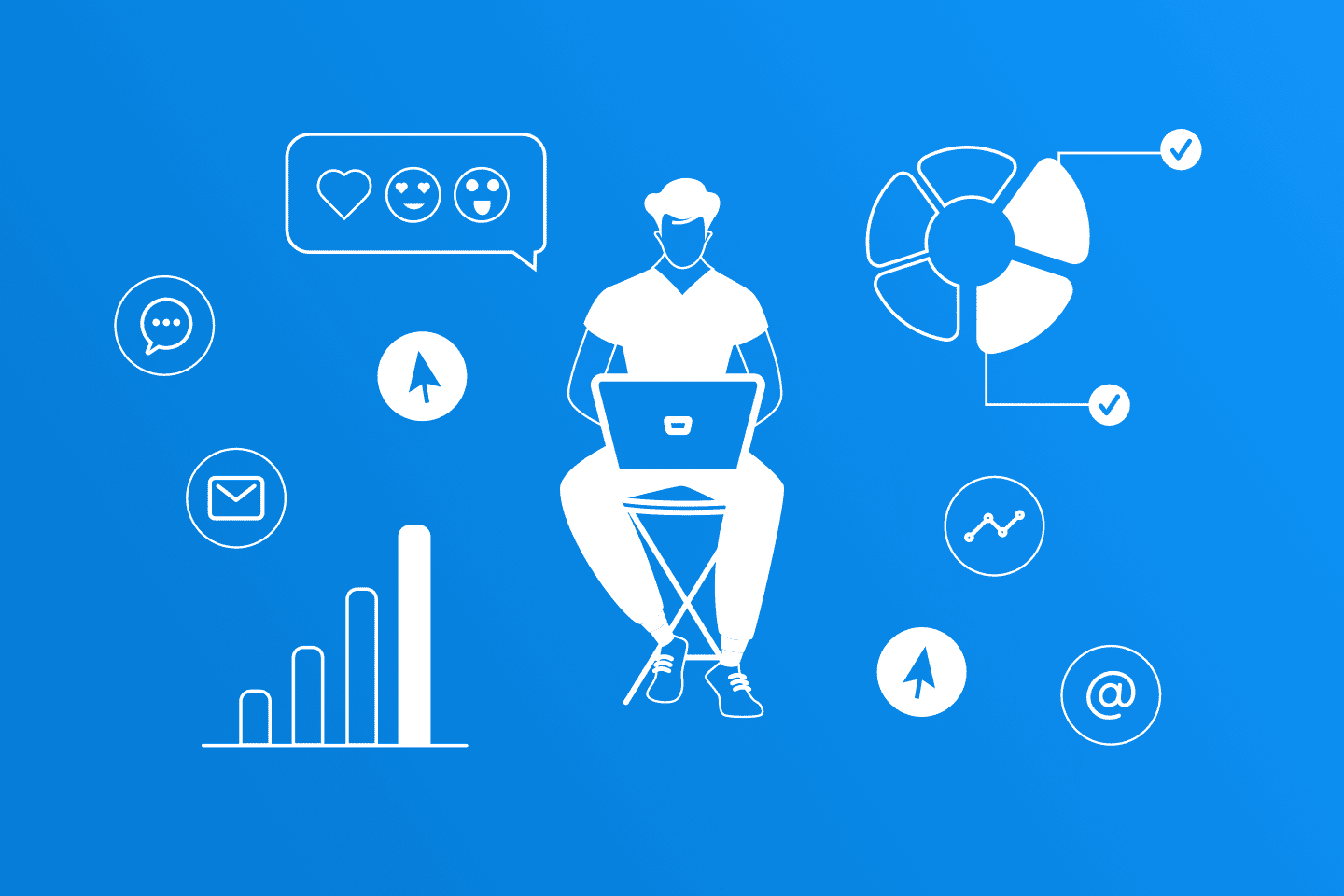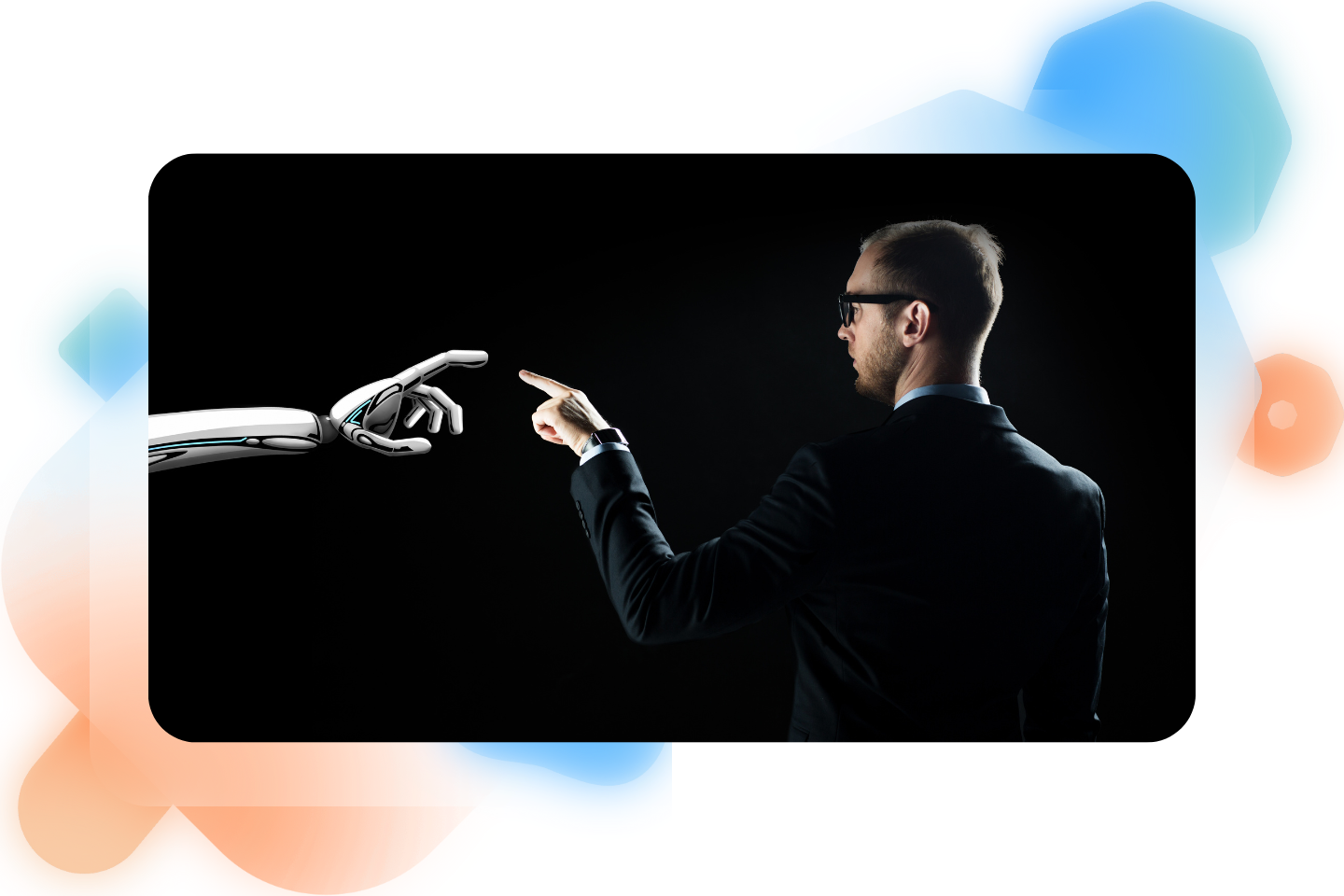Customer experience (CX) is more than just a buzzword. It has become the game-changer that sets apart successful businesses. However, the digital marketing industry is evolving at a rapid pace—companies need to be aware of the most critical CX trends in the next three to six months.
Here’s why companies need to be aware of CX trends
Customer experience is what your customers go through during the entire buyer’s journey.
Whatever they experience at different stages will affect how they view your business. Big businesses that earn $1 billion annually can expect to earn an additional $700 million on average within three years of investing in customer experience.
Plus, 86% of consumers are willing to pay more for a product or service—if it means they’re going to get a great customer experience.
The truth is, consumers of today have grown used to getting answers fast, getting solutions right away, and finding what they need as soon as possible.
What does this mean? Two things:
- Great customer experience is critical to the growth of a business.
- Businesses that know the latest customer experience trends will definitely be ahead of the game.
With Q3 already underway, it means we’re halfway through 2022. Brands are gearing up to meet their annual targets. And since customer experience impacts growth and revenue, there will definitely be a surge in executing specific cx trends.
Experts weigh in: watch out for these CX trends
We’ve collaborated with our network of partners to come up with the top customer experience trends that brands will be putting their money behind in the next three to six months.
Ready? Here we go!
Integrations will play bigger roles
According to Salesforce, 66% of customers will pay more for seamless digital interactions.
Today, there are a lot of technology integrations that can help create a seamless experience across different applications, channels, and platforms.
According to Maurits Pieper, Head of Partnerships over at Dixa, “As businesses review their necessary costs to withstand the economic uncertainty of the next few financial quarters, there is a powerful requirement for customer-facing brands to maximize their existing tech stacks and explore new integrations to differentiate themselves from the market, remain competitive but also to understand new customers and retain existing customers.”

Essentially, integrations result in reduced response time, easier access to different data sources, and automated processes.
Faster processes mean faster growth
Today’s consumers are used to getting things fast.
Before, people would have to sift through books for answers. Today, you just have to do a web search. Before, people would have to wait weeks or even months to see their photos. Today, you can see the photos instantly.
As the demand for faster response times increases, brands will be forced to cut their delivery or response time as short as possible. This is particularly relevant for eCommerce brands.
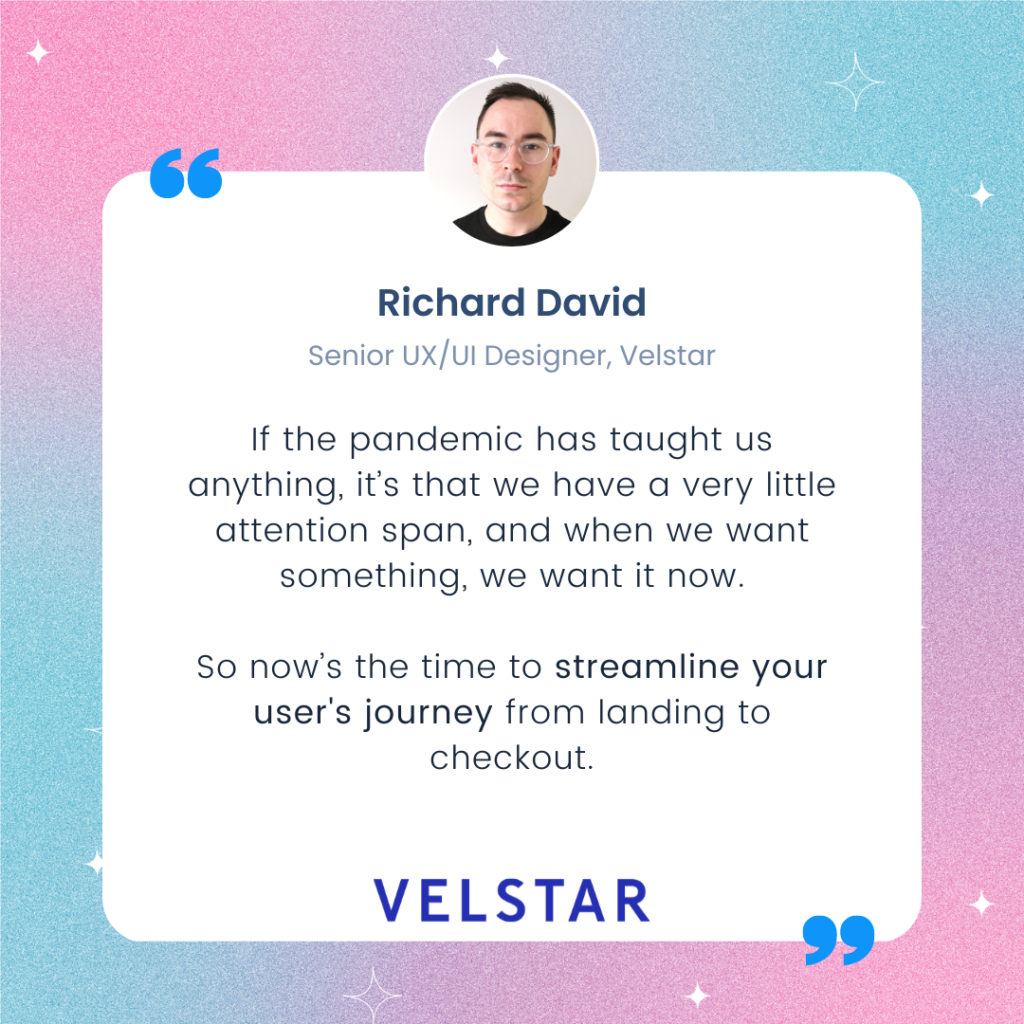
Richard David, Senior UX/UI Designer of Velstar, emphasizes that one of the most popular trends we’re seeing is the faster checkout process using one-click methods. This is usually done through accelerated checkout buttons (PayPal, Apple Pay, Google Pay, to name a few) placed strategically on the product description pages.
Dimitar Toshkov, Demand Generation Manager of Yotpo SMSBump couldn’t agree more. “Brands that offer mobile-first, frictionless, one-step checkout experiences will be able to maintain solid revenues, avoid potential last-minute dropouts, and ultimately, remain ahead of the competition.”

Essentially, brands that can quickly deliver what customers want will have a headstart. In the next 3 to 6 months, there will definitely be an increased focus on faster checkout processes and other strategies to cater to online users faster.
Customer service will be a key differentiating factor
Aside from checkout processes, speed and convenience also pertain to customer service. A Harvard Business Review study reports that:
- 23% of companies never responded to their leads
- Less than 40% of companies respond to leads within one hour
- 42 hours is the average lead response time of B2B companies
What does this mean? Offering speedy and quality customer service will level up the customer experience your business is able to offer. After all, 96% of customers say that customer service is an important factor in choosing a brand to be loyal to.
70% of businesses see a connection between the quality of customer service and their growth—but 40% also say that it isn’t currently prioritized by the management.
However, as more customers look for lightning-fast responses, there will be an increased focus on improving customer service. This can be via expanding customer service teams, investing in training and software, or even outsourcing 24/7 customer service.
Optimized omnichannel experiences will be the standard
The digital world is enormous. Online customers are very likely to have multiple touchpoints along their buyer’s journey. This is where omnichannel marketing comes into place.
A word of caution: It’s not simply about being present, promoting, and selling on different channels. It’s about creating effective touchpoints along the entire journey that is seamless across all channels and platforms.
Justyna Polaczyk, Content Marketer at LiveChat brings up an interesting piece of information: “Only 55% of companies conduct UX testing. It explains why there are so many poorly designed customer journeys.”
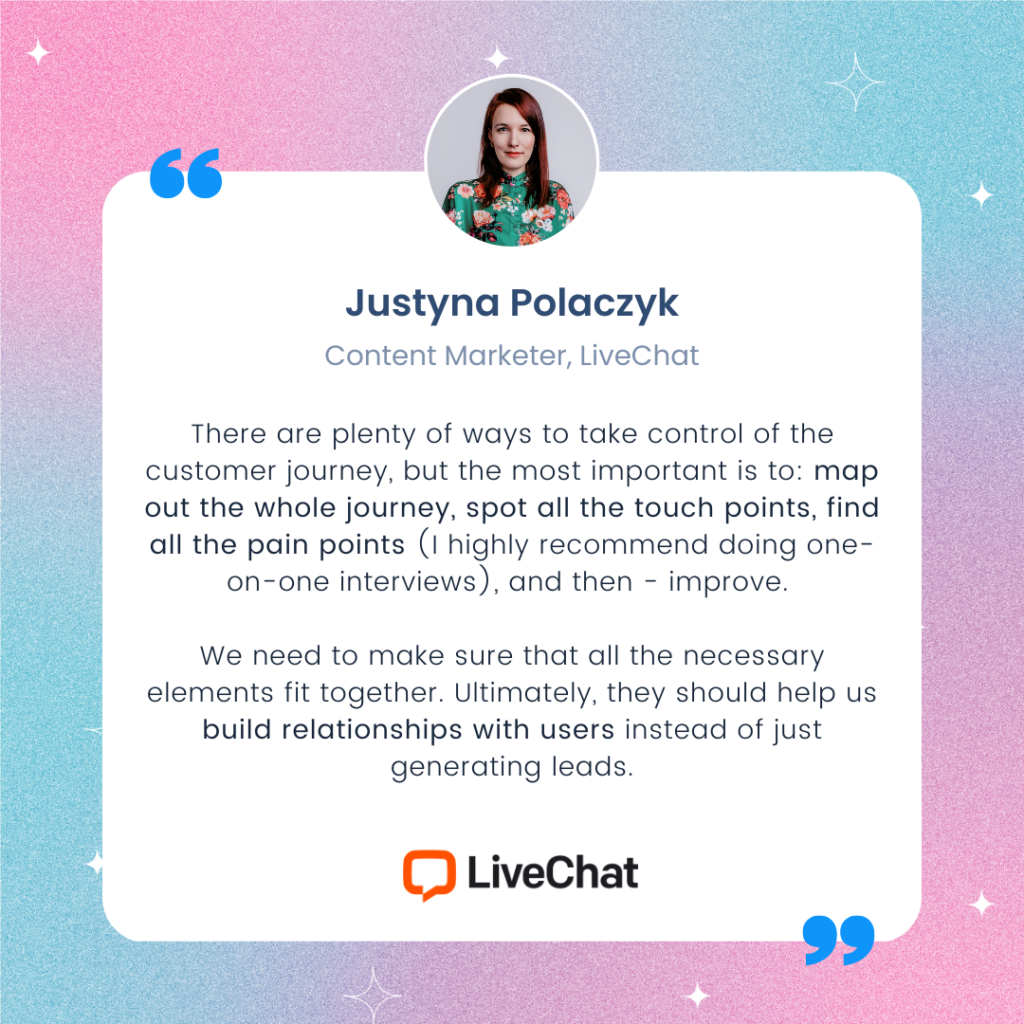
One example that Justyna gives is what she calls “every company’s business card—their website.” From the moment an online user arrives at a website, they immediately get hit by different popups, chat greetings, surveys, newsletter signups, and many more.
Even though these are all essential, Justyna emphasizes that they weren’t designed with people in mind. As a result, website visitors become frustrated with the bad customer experience.
Since the digital world just keeps expanding, it can be expected that touchpoints will continue to increase. Brands will need to carefully map out the entire customer journey, identify all touchpoints, and sew them all together.
Brands will try to play catch up with all the new channels popping up every now and then. We’ll definitely see some serious competition as brands try to one-up each other in creating seamless and optimized omnichannel experiences.
Putting a premium on personalization
Personalization has already been a key focus for many brands, but it will matter more than ever. The COVD-19 pandemic saw a surge in online behavior—exposing online users to various personalization strategies. Because of this, the standards were raised.
Research from McKinsey shows that 71% of consumers now expect brands to deliver personalized interactions. And if this is not met, the consumers get frustrated.
97% of marketers reported a huge increase in their personalization efforts in 2020—and a quarter of this already generated more than 20% higher revenue.

Molly Duffy, Head of Product at Smartrr says that studies show bad customer experiences can cause consumers to lose trust in a business. At Smartrr, they ensure that every single touchpoint delights a customer—whether it’s an SMS update, or changing a purchase on their customer portal.
The next three to six months will be eCommerce chaos—the much-awaited Black Friday, Cyber Monday, and Christmas sales.
Joshua Chin, CEO & Co-founder of Chronos Agency, says that it’s more important than ever to provide personalized experiences as customers have now become highly selective of brands they stay loyal to.
In his experience running eCommerce email marketing strategies for over 300 brands, his team has conducted tons of email and SMS split tests. The variation that almost always wins is the one with a more personal approach.
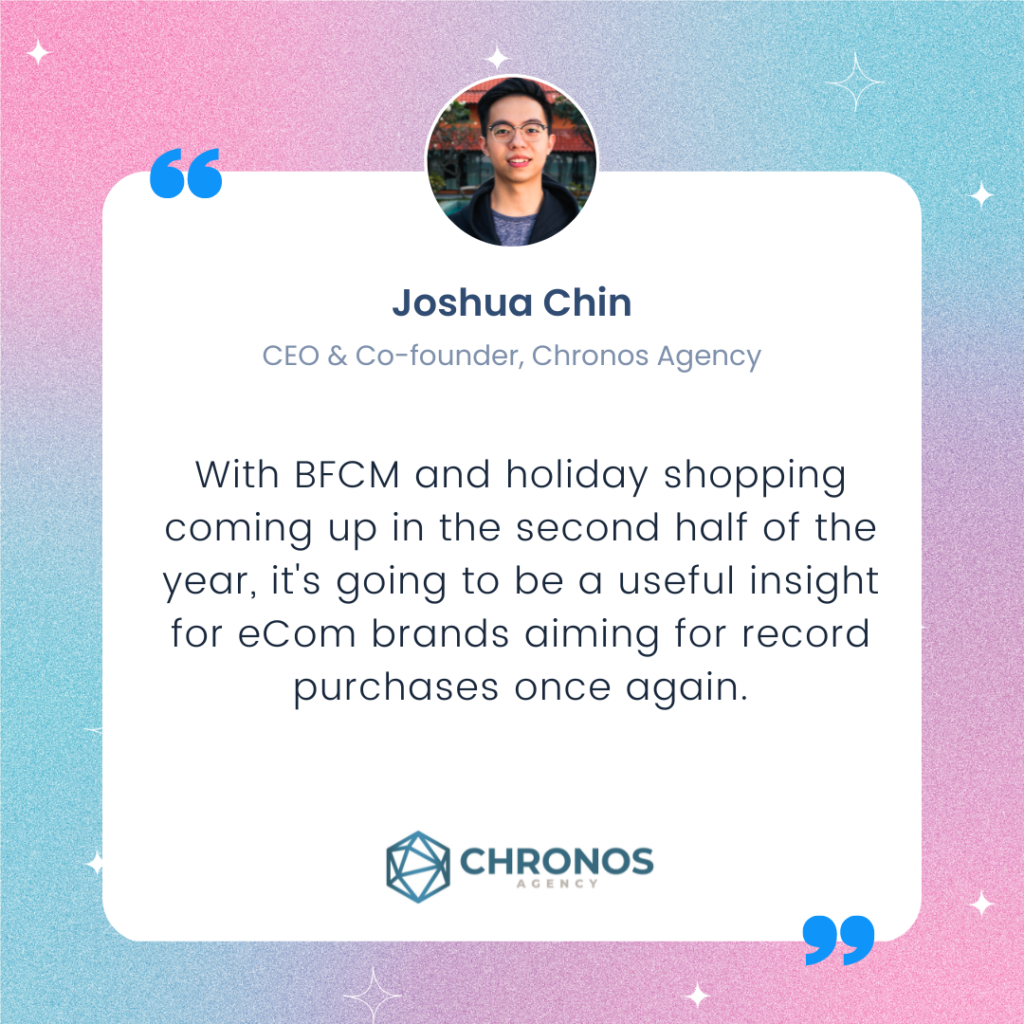
Consumers should expect to be on the receiving end of hyper-personalized experiences designed according to their behavior and preferences. Meanwhile, brands will continue to look deeper into consumer data to come up with newer and more unique ways to deliver tailored customer experiences like no other.
Pivoting focus from acquisition to retention
Did you know that 80% of your future profits will come from 20% of your existing customers? What does this mean? It means that continuous growth and sustainable revenue will actually come from existing customers and not just new ones.
This doesn’t mean you should stop trying to acquire customers. It simply means that your existing customers are your low-hanging fruits. They’re already in the door. You need to make them stay and continue buying. A study from Bain & Company and Harvard Business School also reports that even a 5% increase in customer retention can boost your profits by up to 95%.
Plus, as subscription-based businesses also increase in popularity, the need for effective customer retention strategies is becoming stronger.

Neil Forrest from Gorgias mentions that he is seeing more brands focus on the post-purchase customer experience to ensure that new customers are looked after from the second they convert.
Shannon O’Boyle from Smartrr foresees brands gearing up to pivot from expensive acquisition strategies to longer-term plays around membership, loyalty, and retention.

Key takeaway: Focus on creating meaningful relationships with your customers, and your retention rate will continue to increase.
Get a headstart and hop on these CX trends
Customer preferences will always evolve. This means that the standards of customer experience will also continue to change.
There will always be something new, so it’s important to be on high alert for the next huge cx tool. By putting customer experience as your top priority, you will be able to unlock so many opportunities for your business.
